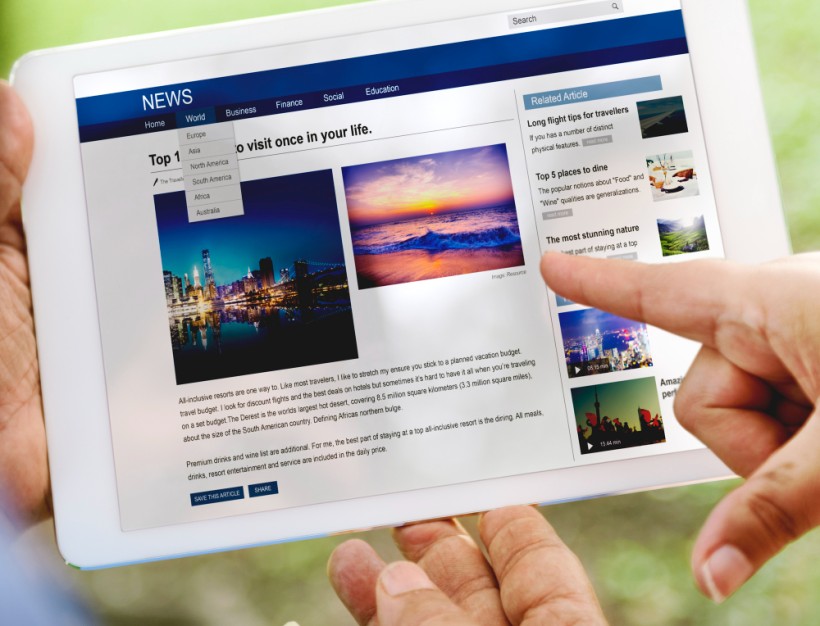You have a strong opinion—one that could spark discussion, challenge norms, or call out a problem no one wants to admit. It’ll get attention. But is it worth the risk?
LinkedIn thrives on bold perspectives. A well-crafted take can boost credibility and attract opportunities. But one misstep—poor wording, the wrong tone, or the wrong audience—can trigger backlash.
So, do you play it safe or speak up? The answer isn’t black and white. It’s about knowing when to engage, how to frame your message, and how to share strong opinions without damaging your reputation.
This post will help you decide if your opinion is worth sharing, how to structure it effectively, how LinkedIn’s algorithm treats controversy, and what to do if things go sideways.
First, let’s tackle the biggest question—should you post at all?
Should you hit ‘post’? A smart decision framework
Not every thought needs to be a post. Some ideas push conversations forward. Others just stir the pot. The key isn’t to silence yourself but to know when to engage and when to hold back.
Before hitting “Post,” ask yourself:
- Is this relevant to my expertise? If it’s not tied to your industry, work, or lived experience, think twice. People respect insights from those with authority on the topic.
- Does this serve my audience? Thought leadership isn’t just about what you want to say, it’s about what your audience needs to hear. If your take sparks insight, great. If it’s just venting, reconsider.
- Does this support my career or business? A strong opinion can attract opportunities, but it can also alienate key people. If taking this stance will close more doors than it opens, reframe your approach.
- Am I prepared for the response? If pushback comes, can you stand by your words without getting defensive? If you’re unsure, sit with it for a day. If you still feel confident posting, it’s probably the right move.
This isn’t about avoiding controversy but about being strategic. Strong opinions scale your brand when they’re delivered with purpose.
If your post makes it through this filter, the next step is framing it in a way that invites conversation, not conflict.
The art of sharing strong opinions without losing respect
Having a strong opinion isn’t the problem. The problem is how you deliver it.
The difference between a post that sparks meaningful discussion and one that sparks a LinkedIn firestorm often comes down to tone, framing, and intent. If you want to share a bold take without damaging your credibility, here’s how to do it right.
- Frame it as a conversation, not a confrontation. Instead of “Anyone who disagrees with this is wrong,” try “Here’s why I see this differently—what’s your take?” The goal isn’t to prove people wrong but to make them think.
- Back it up. A strong opinion without reasoning is just noise. Use data, real-world examples, or personal experience to support your stance. Thoughtful arguments get engagement. Emotional outbursts get eye rolls.
- Control your tone. Passion is good. Aggression isn’t. A blunt statement can come off as dismissive, even if you don’t mean it that way. A simple shift from “This is a terrible idea” to “Here’s why this approach might not work” keeps the conversation open instead of shutting it down.
- Acknowledge other perspectives. You don’t have to agree with opposing views, but recognizing them makes you sound informed, not stubborn. Saying, “I know some people see this differently, but here’s why I take this stance,” signals that you’ve thought it through. It also makes people more willing to engage in a productive way.
- Invite engagement the right way. Instead of ending with a statement that dares people to argue, try a question that encourages discussion. “How do you see this?” works better than “If you don’t agree, don’t bother commenting.” The first invites dialogue. The second invites a fight.
Strong opinions don’t have to be divisive. When framed the right way, they build credibility, start meaningful conversations, and set you apart as a leader in your field.
But how far you can go depends on where you work. Some industries encourage bold takes. Others expect a more cautious approach.
Does your industry shape your freedom to speak?
Not everyone has the same level of freedom on LinkedIn. What you say—and how you say it—depends on your industry, your role, and who’s watching.
Some industries encourage bold, unapologetic opinions. Others require a more careful, calculated approach. Knowing where you stand can mean the difference between a post that builds your credibility and one that quietly causes problems.
Here’s how different industries handle controversial takes:
- High-risk industries (finance, healthcare, law, government). In compliance-heavy fields, the margin for error is slim. A poorly worded take could create legal, ethical, or PR issues. If you work in these industries, keep opinions grounded in expertise and avoid anything that could be seen as confidential, misleading, or legally sensitive.
- Moderate-risk industries (corporate leadership, consulting, B2B SaaS). Professionals in these spaces have more flexibility, especially when their stance aligns with company values or industry trends. But reputation is everything. If you’re a senior leader, your words reflect on your company. If you’re an employee, pushing too hard could create friction with leadership. The safest approach? Stick to constructive, solutions-focused discussions rather than polarizing takes.
- Low-risk industries (startups, tech, marketing, creative fields). Bold opinions often thrive in these spaces. Many startups and creative industries embrace unconventional thinking, and taking a stance can actually strengthen your brand. The key is to be strategic, not reckless—challenge the status quo without being needlessly combative.
- Entrepreneurs & thought leaders. Running your own business gives you the most freedom—but also the most at stake. Unlike employees, you don’t answer to a boss, but you do answer to potential clients, investors, and partners. Every strong opinion you post will attract some people and push others away. Are you willing to lose business over it? If yes, go for it. If not, choose your words carefully.
No matter where you fall, understanding your risk level is key. A marketer at a startup can likely post a fiery industry take without issue. A lawyer at a corporate firm? Not so much.
And while industry norms shape what you can say, LinkedIn’s algorithm decides how far your post will go.
What to do if it blows up in your face
Even with the best intentions, things don’t always go as planned. A post you thought would spark a healthy debate might spiral into chaos.
A well-meaning take might get misinterpreted. The wrong person might see it, share it, and suddenly, you’re at the center of a controversy you never saw coming.
This is where most people panic. They either double down, delete the post, or disappear. None of these are great moves. How you handle backlash says just as much about your credibility as the original post itself.
Here’s how to recover gracefully:
- Step 1: Pause & assess. The worst thing you can do is react emotionally. Take a step back. Read the comments. Try to understand where the pushback is coming from. Are people genuinely upset, or is it just internet noise?
- Step 2: Clarify your point. If people are misunderstanding your intent, step in and add context. A simple “I see some people took this differently than I intended. Let me clarify…” can go a long way in shifting the conversation.
- Step 3: Own it if necessary. If you made a mistake—whether it was poor wording, a bad take, or an oversight—own it. A short, direct acknowledgment works best: “I realize now that I could have framed this differently. I appreciate the feedback.” A well-handled misstep can actually increase your credibility.
- Step 4: Know when to disengage. Some people just want to argue. If you’ve clarified your point and addressed legitimate concerns, but the pile-on continues, it’s okay to step away. Let the conversation run its course. You don’t need to win over everyone.
- Step 5: Learn for next time. Every controversial post—whether it goes well or not—is a learning experience. What sparked the strongest reactions? Was it the wording? The topic? The audience? Use that insight to refine how you approach sensitive topics in the future.
A well-managed controversy won’t ruin your reputation. In fact, handling backlash with grace, confidence, and professionalism can actually make people respect you more.
What really matters is how you move forward, which brings us to the final takeaway.
Final thoughts on sharing strong LinkedIn opinions
Playing it safe keeps you out of trouble, but it won’t help you stand out. Being reckless might get attention, but at what cost? The goal isn’t to avoid strong opinions—it’s to share them with purpose, clarity, and respect.
A well-framed take can build credibility, spark meaningful discussions, and position you as a leader. But it’s not just what you say but how you say it. Thoughtful arguments invite engagement. Knee-jerk reactions invite backlash. The difference is in the delivery.
Know when to engage. Own your perspective. Stay open to discussion. That’s how you stand out without self-sabotaging.
Want help crafting LinkedIn content that drives real conversations without the risk? Work with Column.





